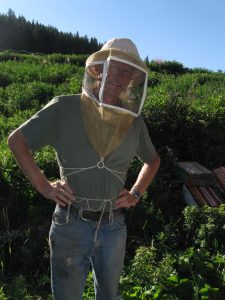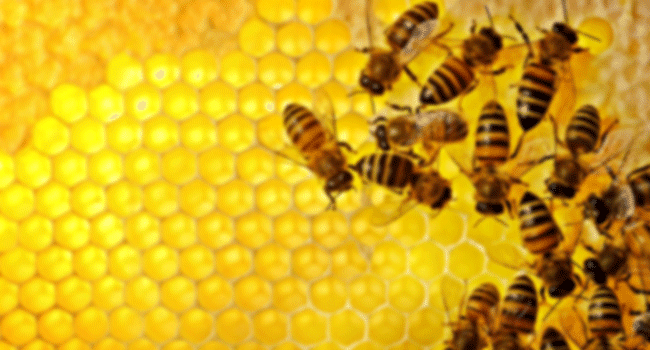
Ed Colby
Get On Board!
coloradobees1@gmail.com
Fire In The Belly
We went to Scottsbluff, Nebraska for the eclipse. Scottsbluff’s prettier than you think. An entrepreneurial farm family rented us a campsite in their hayfield. It contained old cow pies but thankfully no freshies. We paid $100 for the night, along with 50 other campers.
My favorite part was the final seconds before totality, when darkness descended so fast the light evaporated before your very eyes. Venus suddenly appeared. We could very clearly see the sun’s corona, that ball of normally invisible super-hot gases expelled from the sun. We took in a very nice 360-degree sunset.
We did not bring bees with us to the eclipse. I would have liked to watched their reaction to the world turning dark in the middle of the day. But you can’t take everything when you go on a trip!
These eclipses are over before you know it! For some folks it was almost too long. Nobody left during the couple of minutes of totality, but as soon as the sun peeked its glorious head around the backside of the moon, engines started and motorists began heading for home.
My sidekick Marilyn likes the back roads, but the next day on the way back I convinced her we needed to check out I76, the Colorado “pollinator highway.” This spring the legislature unanimously passed a resolution calling for this road to be managed in a way friendly to pollinators. Our drive along I76 took us through a patchwork of irrigated farmland alternating with dry land and sagebrush.
It didn’t look any different from any other Interstate, as far as I could tell. We noticed some aggressive roadside mowing. I mean mowed patches of ground that for the life of me I couldn’t understand why anyone would bother to mow. You don’t want flowers encroaching on the roadway, but why would you need to do more than minimal mowing on a “pollinator highway?”I guess the pollinator friendly practices haven’t gotten started yet.
When we passed cornfields butted up against the right of way, I wondered about neonicotinoid pesticides leaching into the weeds and wildflowers along the roadside.
Pesticides, poor forage and mites are the three horsemen of the honeybee apocalypse. I harp on mites a lot. Maybe you’ve noticed. I do so because you can take them out of the equation, thus making life so much easier for your bees. On your bee neighborhood level, you probably don’t have much leverage over pesticide use or bee food sources. Mites you can do something about. In an imperfect world, we do what we can.
Now comes research linking pesticide exposure, including exposure to neonicotinoids, with a corresponding negative impact of parasites on pollinators. You can read the abstract at ncbi.nlm.nih.gov/pubmed/26826357. In a nutshell, studies show that pollinators weakened by pesticides have a harder time dealing with parasites. Are we surprised?
I wrote to one of the study authors, Dave Goulson, in England, inquiring if there was “any credible research linking neonic exposure and honeybees’ susceptibility to Varroa.”
I He replied: “Not that I know of, but there is so much literature coming out these days, it is hard to keep up!”
Whether there is a link between pesticides and Varroa or not, it still makes sense to keep mites at bay. Be careful about blaming your hive losses on pesticides. Don’t neglect to look under your nose. Your problem might be a runaway mite epidemic!
A guy I know from the ski hill called. He bought a beginner bee startup kit at Costco and wanted my advice for establishing one hive.
I gave him my good news/bad news speech. I told him that bees were fascinating little darlings, and they might provide him with hours of education, amusement and hard work. I also told him that it could be challenging to keep them alive, especially through the winter.
I always try to discourage would-be beekeepers from taking the plunge. So I told him to forget it, “unless you have the fire in your belly.” Then I’d help. He needed to get enrolled in an introductory beekeeping course and not try to cowboy this new hobby. We don’t need more beekeepers. We need more good ones. I told him about Varroa mites and the challenge they pose for beekeepers. I warned him that his hives might become a menace to neighboring colonies if he let his mites get out of control. He said he had no idea. He only wanted to do this “for the bees.”
I told him that was noble but misguided. We don’t need more bees. We need more healthy ones. I said, “I’ll help you, but only if you’ve really got the itch.”
He acted noncommittal but seemed to appreciate my offer. Out here in the sticks, we have no local bee club. I told him he could join the state bee association or maybe take off a few days in March for the Wyoming Bee College in Cheyenne.
I said I might have some nucs for sale in the spring. I told him two hives are ten times better than one. I said call anytime.
He said bears come through his neighborhood in the Fall. I told him that would be a problem, and that I didn’t know if the game warden would provide solar electric bear fencing for one hive.
I’ll be surprised if he calls back. He’s intrigued right now, but I gave him a lot to think about. Besides, Spring’s a long way off, and I’m pretty sure he doesn’t have the fire in his belly.
Ed Colby practices beekeeping in Aspen Mountain, Colorado, where he lives with his partner, Marilyn.









